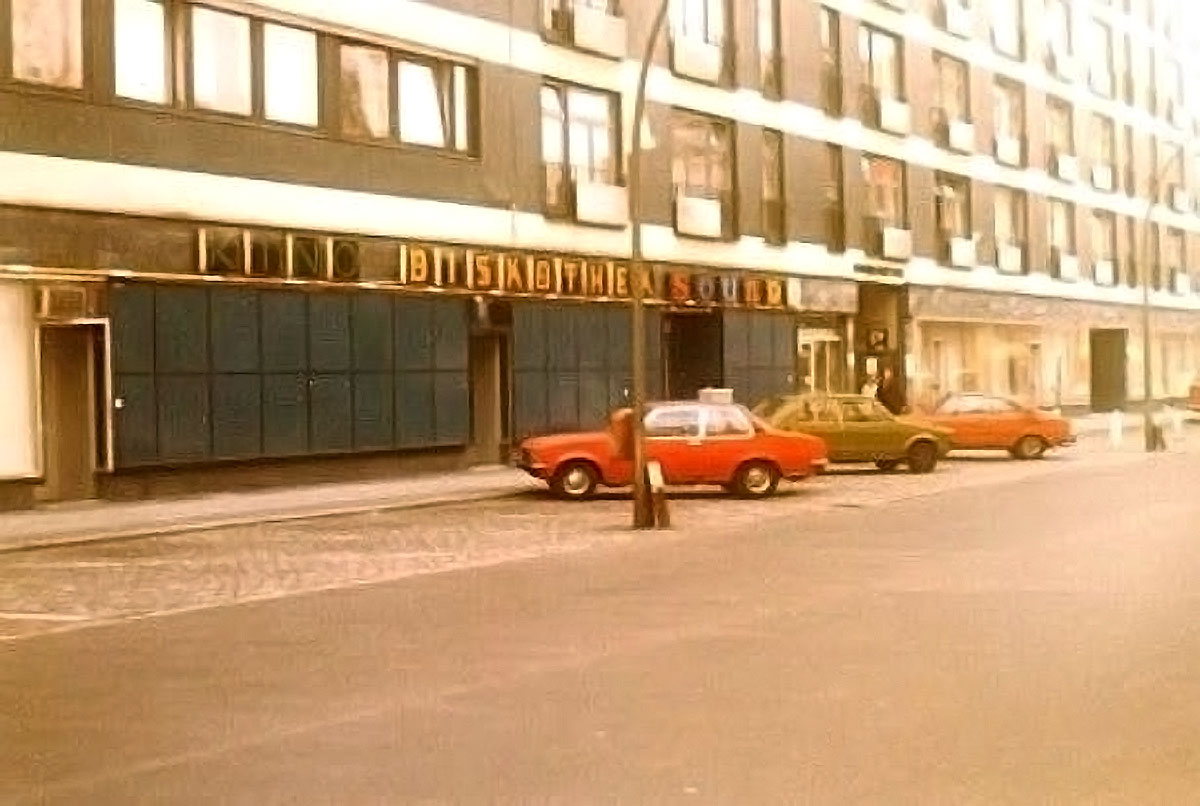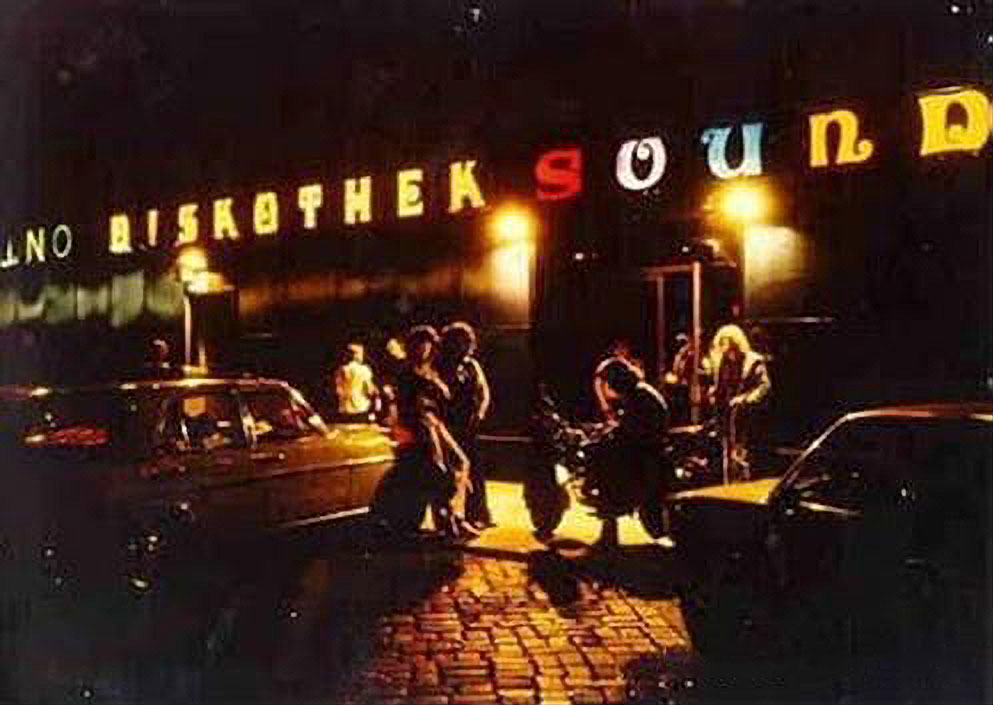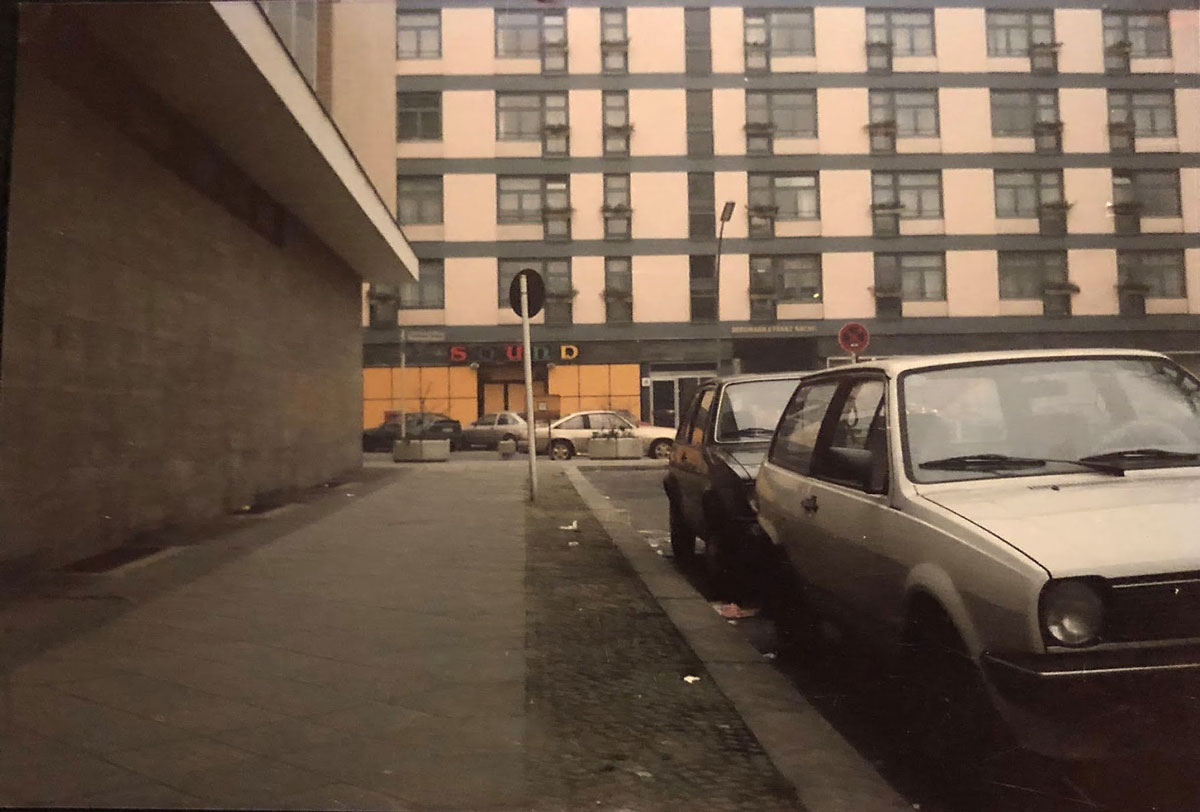Sound […], also spelled S.O.U.N.D., was the name of a Berlin discotheque that in the 1970s and 1980s described itself as the “most modern discotheque in Europe” and it was indeed, due to the technology, at least in the 1970s . Around 1975 there were already laser projections, a fog machine and a professional video recording device, among other things. The stamp you got at the entrance was only visible under ultraviolet light.
The first opening date of the disco, which was located at Genthiner Straße 26 in what was then the Tiergarten district, is not known.
Herbert von Ramm was the leaseholder from 1969 to 1971. At that time it was called CENTRUM 2000. Because of the drug problem in the discotheque, the subsequent tenant founded a drug aid association. Despite this, the closure of the CENTRUM 2000 in April 1972 could not be prevented. Under the name S.O.U.N.D. However, a reopening could then be achieved. The discotheque was located in part of a converted underground car park, the entrance, recording room, toilets and video technology were on Genthiner Strasse and was open daily from 7 p.m. Later there was also the Café am Park on the street level. The discotheque was accessed via a wide staircase.
Progressive rock and a lot of experimental music was played in the discotheque. In addition to current music, musicians and groups also performed live, […]
The discotheque had a small cinema in which current and classic films were shown, and in a video room one could see the then current TV programs and video recordings on monitors. The corresponding headphones could be borrowed for a small deposit. To relax for a short time, the visitors withdrew to the tea and wine bar, while a bistro served snacks and complete meals to quench hunger.
In Berlin in the mid-1970s, the colorful, large-format sound posters showing a mouth in front of a radiating rainbow pattern were part of the street scene.
In order to prevent the discotheque from being closed because of drug consumption and dealing, only non-alcoholic drinks were served for a while (milk bar concession). Despite a strict drug ban, young people could get their hands on heroin, among other things. The so-called Babystrich was located near the Sound on Kurfürstenstrasse. There was a lot of traffic in the vicinity of the discotheque, customers were looking for girls and/or boys. In order to curb trade and consumption in the sound, the toilet doors were designed like western saloon doors (half height) so that no one could feel unobserved, especially when fixing. Despite many countermeasures, the sound was repeatedly hit by raids. Due to problems with the tax office, the sound finally had to be closed. […]
This era finally came to an end when the lower rooms were set on fire in 1988.
“Sound (Berliner Diskothek)” Wikipedia, Wikimedia Foundation, 7 June 2022, de.wikipedia.org/wiki/Sound_(Berliner_Diskothek. | Translation mine.
Credits: data is credited to “© OpenStreetMap contributors”. The data is available under the Open Database License. | Data also credited to: HistoMapBerlin | Graphics, adaptation and code are mine and are licensed under the Creative Commons Attribution-ShareAlike 2.0 license (CC BY-SA 2.0).
Credits: data is credited to “© OpenStreetMap contributors”. The data is available under the Open Database License. | Graphics, adaptation and code are mine and are licensed under the Creative Commons Attribution-ShareAlike 2.0 license (CC BY-SA 2.0).
Resources:
- All the clubs and disco in Berlin on Wikipedia






Leave a Reply